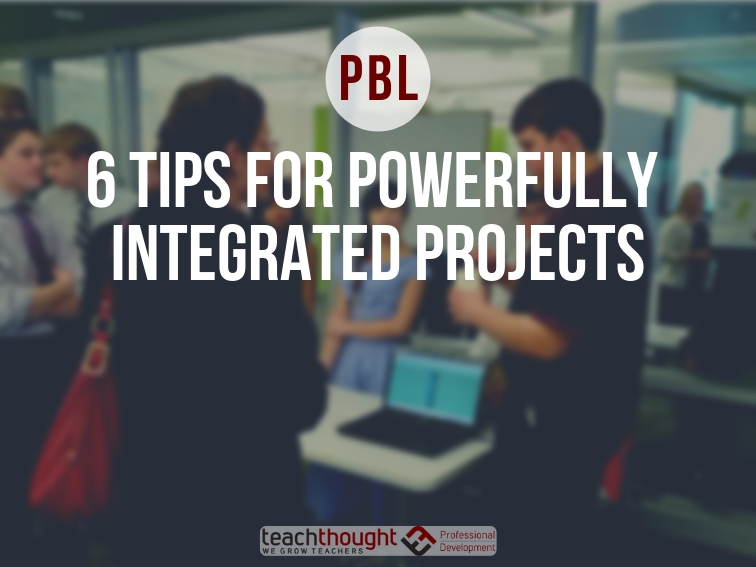
One of the weaknesses of our modern education system is that content has become so siloed that students rarely see the connections between subjects or connections with their world. Integrated projects can break down these walls when students investigate authentic problems that cross subject lines.
I have team-taught social studies with English and math with science. I have also designed numerous projects that integrated multiple content areas. Integrated projects can be challenging to plan and manage, even for experienced PBL teachers. Here are 6 tips that I have learned to make integrated projects powerful learning experiences for all students.
6 Tips For Powerfully Integrated Projects
1. Get everyone on board
I tend to get really excited when brainstorming integrated projects. A few years ago, some colleagues and I developed a Shark Tank-style project solving issues that are remnants of modern Industrialization. We were mostly humanity teachers but thought it would be a great school-wide project.
In our eagerness to share with the rest of the staff, we overwhelmed them and teachers felt forced into something they weren’t comfortable with. People deserve the opportunity to process what they are being asked to participate in.
I learned that it is as important to get group buy-in, as it is to plan something great. For future ideas, I created a Google Doc pitch of the concept. Then I shared it with commenting rights to everyone involved a week before we were scheduled to discuss it. This gave everyone an opportunity for their voice to be heard both in support and with concerns. It also gave time for people to process the proposal without feeling overwhelmed by my zeal.
The result was a huge success as people who were hesitant before, now were committed to joining.
2. Attack big problems
The possible topics for an integrated project may seem endless, but you should choose a major problem with multiple entry points. If the project is too narrow it will be difficult for various content areas to engage and the purpose for students may be missing.
Choose an issue that has the potential for open-ended solutions. Homelessness, environmental protection, recycling, and poverty are good examples of large issues. Allow students to dream big in how they can fix it. This project should be something epic that they will remember with pride 10 years down the road.
3. Focus on your community
The challenges students explore may be worldwide, such as clean water, modern-day slavery, or climate change. But have students focus on local aspects of the global issue. This makes the project personal and allows for connections with the local community. It also increases the opportunity for students to actually do something about it.
Solving worldwide hunger is probably beyond what an individual school can accomplish. But learning about worldwide hunger and helping to alleviate it in their neighborhood is feasible. It is more powerful for students to perform real service in their local community than to dream up a grand scheme for the world that never gets implemented.
4. Find common standards
What comes first, the big project idea or the standards? Either way can work. Have all teachers share their scope and sequence of topics and standards. Some standards are too narrow and discipline-specific for integrated projects. Look for ones that are open-ended and focus on an application of skills.
English language arts and math involve skills that can often be applied to any problem, so look for parallel content in social studies and science, such as human interaction with the environment, effects of modernity, or designing a prototype. (Here are some ideas to help students design their own projects.)
5. Think Ahead
The biggest challenge of integrated projects is the logistics. How will the project be launched? How will student groups be formed between different classes? Will “normal” classes occur, or will a specialized schedule be used? Will students work on the project every day, in every class? How will it be assessed? What will presentation day look like?
Teachers need to discuss and plan every detail weeks or even months ahead of time. It is vital to have clear and open conversations to ensure everyone stays on the same page with the same expectations. This will take a concerted effort by everyone to make it work.
6. Connect with local organizations
To be a truly powerful experience, students need to connect with the community. Integrated projects are a great opportunity for service learning. Use community members and organizations to launch your project, as subject experts during the work, and as the public audience upon conclusion. (See also Place-Based Education.)
I have had students get internships and jobs because of the high quality of work they have presented to the community. When students do authentic work for the public, it is something that can spur them into exciting careers and memories that they can look back on for the rest of their lives.
Integrated projects definitely require extra preparation and commitment, but the payoff is worth it as the authenticity increases exponentially. Design an experience that your students will remember for a lifetime!